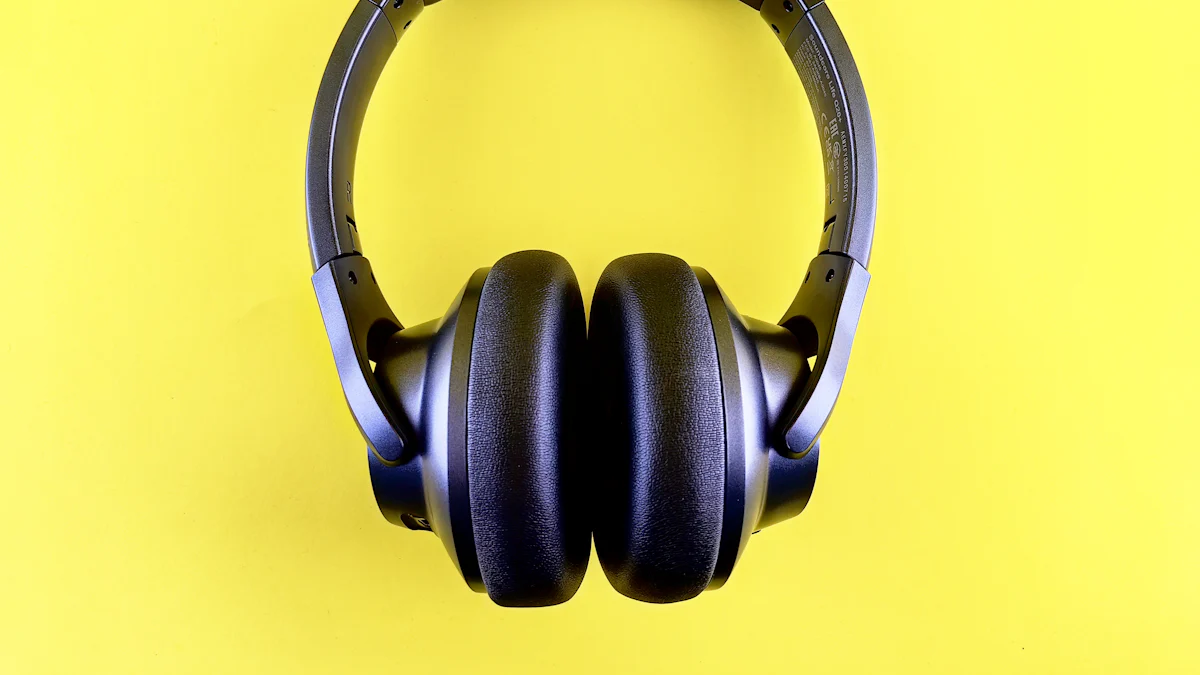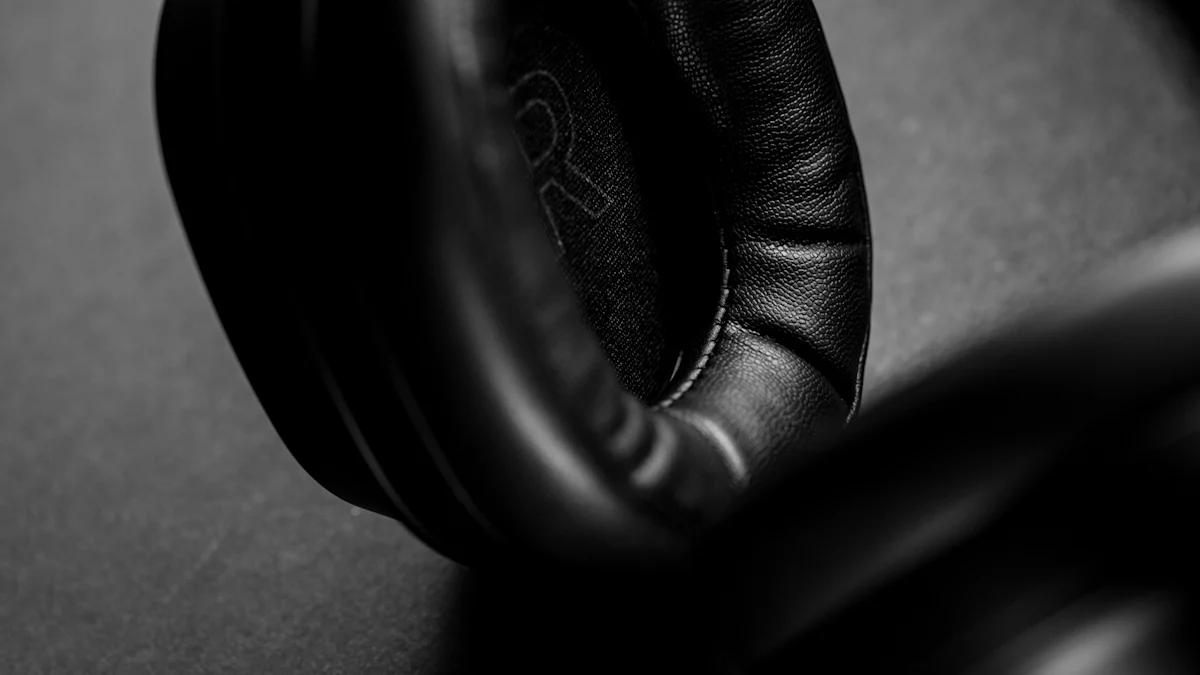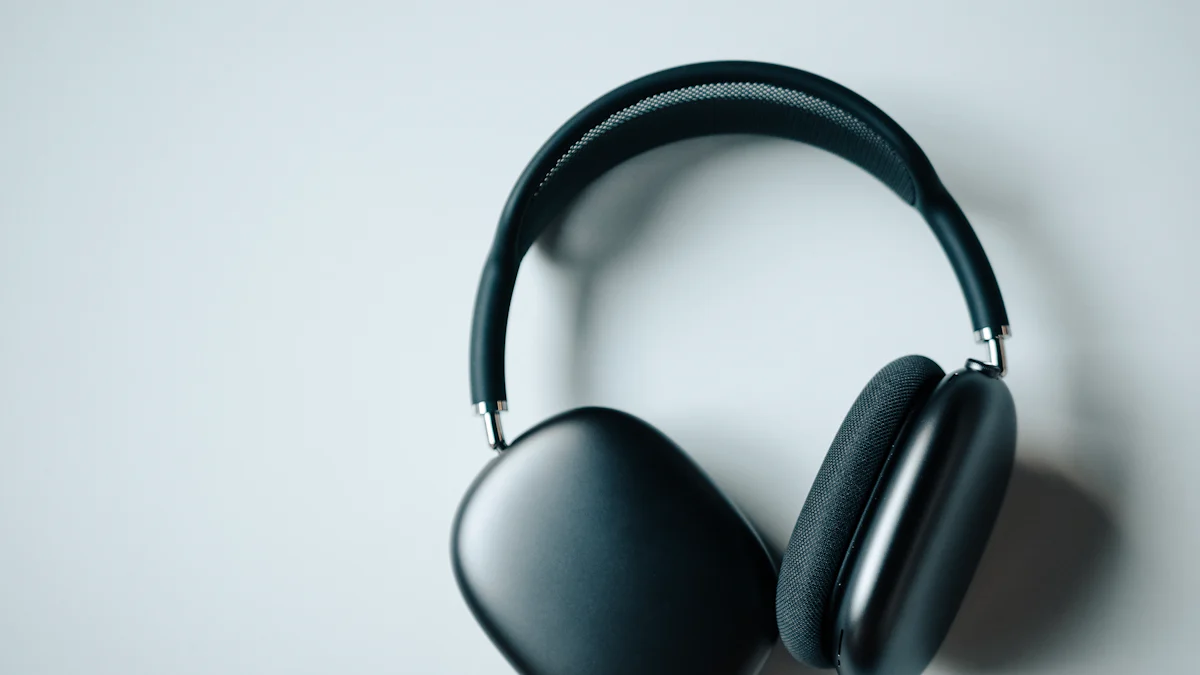Discover the Magic of Active Noise Cancellation

Active Noise Cancellation (ANC) transforms audio experiences by creating a serene listening environment. ANC technology uses sophisticated algorithms and ANC Microphone systems to counteract external noise. The blog delves into the rich history, cutting-edge technology, and diverse applications of ANC. The importance of noise cancelling headphones in modern life cannot be overstated. The market for these devices is booming, with projections indicating growth from USD 17.88 billion in 2024 to USD 34.42 billion by 2029. This surge reflects increasing smartphone users and the adoption of new audio technologies.
History and Development
Origins of ANC
The Development of Primitive Headphones began in the early 20th century. The concept of Noise Reduction emerged during this period. Early experiments focused on reducing unwanted sounds. Engineers aimed to create a more immersive audio experience. The Development of Primitive Headphones laid the groundwork for future innovations.
In the 1950s, Dr. Lawrence Jerome Fogel played a pivotal role in advancing noise-canceling technology. He submitted patents for one of the first noise-canceling headphone systems. These efforts marked a significant milestone in the journey from Primitive Headphones to Modern High-Tech devices.
Evolution of ANC Technology
The Evolution from Primitive Headphones to Modern High-Tech headphones witnessed remarkable progress over decades. The 1960s saw the first patents for noise-canceling headphones filed by Fogel. This era marked the transition from basic concepts to practical applications.
The introduction of first-generation Active Noise Cancellation Technology revolutionized audio experiences. Engineers developed systems that utilized microphones to detect external sounds. These systems generated anti-noise signals to counteract unwanted noise.
Key innovators like Amar Bose contributed significantly to this field. His work led to advancements in multi-Microphone Noise Canceling Technology. This innovation enhanced sound quality and user experience.
Modern ANC technology employs sophisticated algorithms and powerful processors. These components create a serene listening environment by minimizing external disturbances. The integration of feedback control further improved performance.
Today, ANC technology is a staple in modern headphones, offering users an unparalleled audio experience through effective noise reduction techniques.
How Active Noise Cancellation Works

Basics of Active Noise Cancellation
Active Noise Cancellation Principles rely on the concept of superposition. ANC technology works by adding two sound waves to cancel each other out. This technology works through digital signal processing, which processes audio signals from microphones to generate a cancellation wave. The Basics of Active Noise involve understanding how these principles create a serene listening environment.
The comparison between Active Vs. Passive Noise highlights different approaches in noise reduction. Passive Noise relies on physical barriers and materials to block ambient sounds. In contrast, Active Noise-Cancellation Technology Works electronically to counteract external noises.
Types of Active Noise Cancellation
The three primary ANC types include Feedforward ANC, Feedback ANC, and Hybrid ANC. Each type offers unique benefits and applications.
-
Feedforward ANC: This method uses external microphones to detect ambient noise before it reaches the ear. The system generates an anti-noise signal that cancels unwanted sounds effectively. The advantage lies in its ability to handle high-frequency noises efficiently.
-
Feedback ANC: Internal microphones near the speaker detect residual noise after it enters the ear canal. This approach allows for real-time adjustments, enhancing sound quality and user experience significantly. Researchers continually improve this method's algorithms for broader frequency handling.
-
Hybrid ANC: Combining both feedforward and feedback methods, hybrid technology provides comprehensive noise attenuation coverage with minimal feedback issues. Users benefit from accurate, tailored noise cancellation while retaining ambient sound isolation features.
The ongoing improvements in these technologies enhance their integration with other systems like spatial audio and voice recognition, offering users a more immersive experience in various environments.
Applications and Future of ANC

Active Noise Cancellation in Headphones
Active Noise Cancellation Technology has revolutionized the way people experience audio. Noise Cancelling Headphones have become essential for various uses, offering users a superior listening experience by reducing unwanted background noise. These headphones are particularly beneficial during air travel, commuting, and other noisy environments. The ability to listen at lower volumes helps prevent noise-induced hearing loss while enhancing sound clarity.
Noise Cancelling Headphones for Different Uses
The versatility of Noise Cancelling Headphones extends beyond personal entertainment. Professionals use these devices to increase productivity in busy workspaces. Students benefit from reduced distractions during study sessions. Travelers find relief from the constant hum of engines on long flights. The market growth reflects an increasing demand for high-quality audio experiences across different scenarios.
Gaming Headphones and ANC
Gaming Headphones with Active Noise Cancellation Technology provide gamers with an immersive experience by eliminating external disturbances. These headphones enhance focus and concentration, allowing players to fully engage in their virtual worlds. The integration of advanced technologies like spatial audio further elevates the gaming experience.
Future Developments in ANC
The future holds promising advancements for ANC technology project, particularly in the realm of Future headphones. Manufacturers continue to innovate, integrating cutting-edge features into modern high-tech headphones typically used by consumers today.
Integration with Modern High-Tech Headphones
The integration of ANC processing into Modern High-Tech Headphones enhances user experiences significantly. Features such as voice recognition and adaptive sound modes offer personalized listening options tailored to individual preferences. This seamless blend of technology ensures that future headphones remain at the forefront of audio innovation.
Potential Innovations in ANC Technology
Potential innovations include improvements in battery life, design aesthetics, and overall performance of acoustic noise cancelling headphones. Companies like Bose lead the charge by developing sophisticated algorithms that optimize noise cancellation effectiveness without compromising sound quality or comfort levels.
As technology advances rapidly, future gaming headphones will likely incorporate even more refined versions of DSP (Digital Signal Processing) systems alongside traditional active noise cancellation techniques found within current models today—ensuring unparalleled auditory experiences await those who seek them out eagerly!
Active noise cancellation technology has revolutionized the way people experience audio. The ability to create a serene environment by reducing unwanted noise enhances daily life. Noise cancellation systems employ sophisticated algorithms to counteract external disturbances, improving sound quality significantly. The blog explored the rich history and technological advancements of active noise cancellation, highlighting its importance in modern audio experiences.
-
Active noise cancellation contributes to quieter living spaces.
-
Enhanced focus and productivity result from reduced background noise.
-
Future innovations promise even greater integration into everyday life.
The potential for further development remains vast. Continued advancements will likely lead to more widespread applications, offering improved auditory experiences for all.
See Also
Exploring Tranquility through Audio Relaxation: A Journey Inward
Easy Guide to Incorporating Echo Effects in Online Audio for No Cost
Mastery of Computer Audio Visual Features: A Detailed Tutorial
Boosting Virtual Meetings with Versatile 4K Webcam Tracking Technology
Embracing Safety: Adopting 360 Camera Surround Monitoring for Protection
